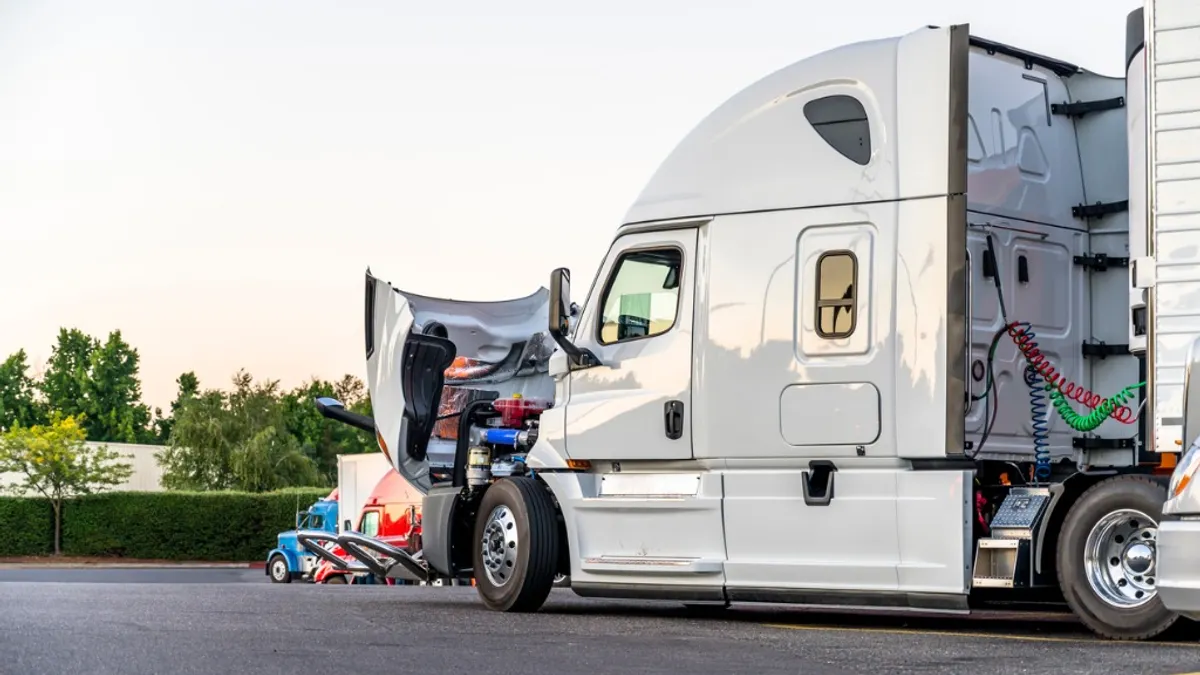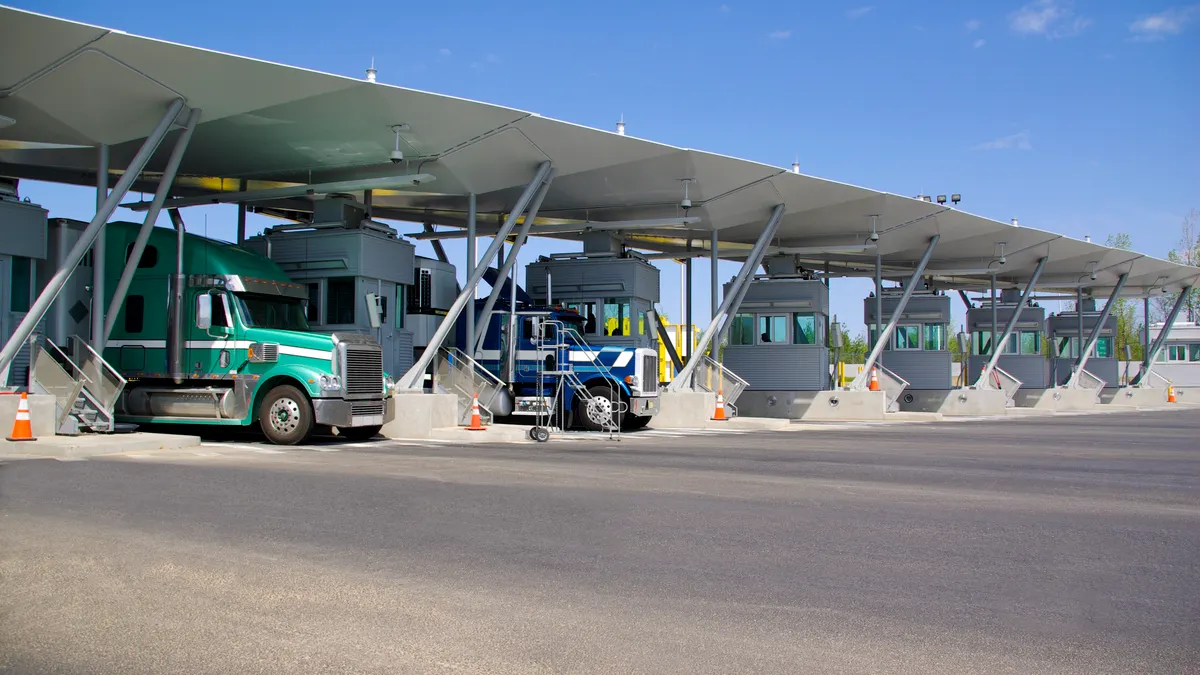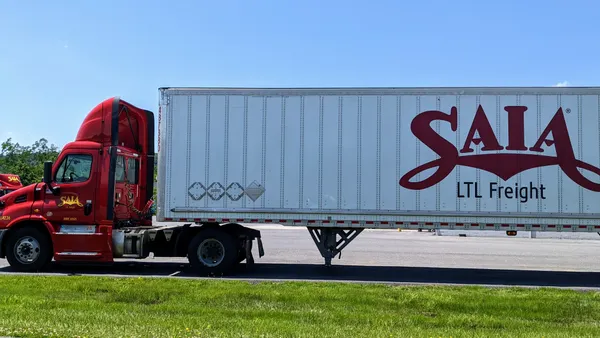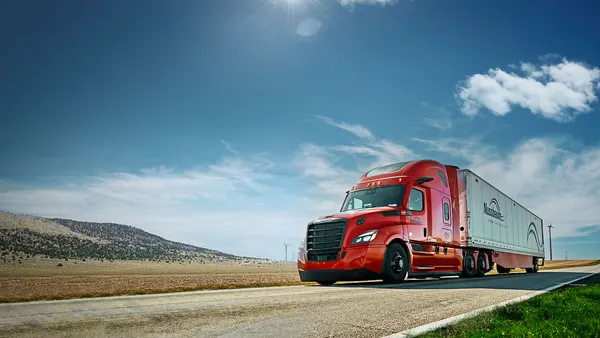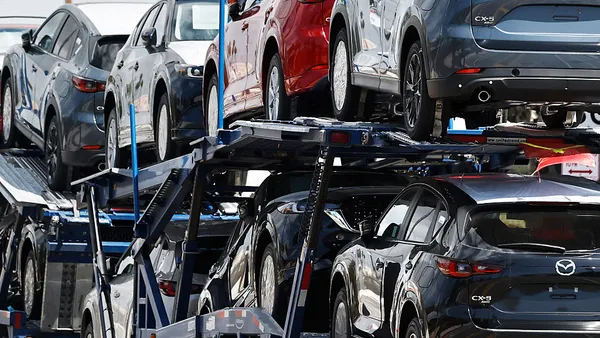Dive Brief:
- The FTR Trucking Conditions Index (TCI) will likely stay negative until 2021, FTR reported Friday. The TCI is based on freight volumes, utilization and rates. The index reading was 0.96 for February, which was down from January but slightly positive, FTR said.
- In a report Thursday, FTR said trailer orders for March fell 54% from February to 6,500 units. Year over year, March trailer orders were down 55%, FTR reported on Thursday. Plummeting freight volumes and rates due to the COVID-19 pandemic could lead to the worst trucking conditions on record during the second quarter of this year, later hitting bottom in April and May, according to FTR's report.
- "The need to restock grocery shelves provided a brief boost for some segments, but the economic shutdown now has taken a toll on the whole industry. While an economic restart likely will begin in May, the damage wrought during this period will weaken trucking conditions for months to come," FTR VP of Trucking Avery Vise said in the TCI report.
Dive Insight:
For trucking, it seems as though time could be the medicine that will eventually heal all wounds. But how much time? For now, it's estimated fleets and manufacturers are still in an evaluation period, because of the coronavirus crisis, and that is causing orders to stall. Don Ake, FTR vice president of commercial vehicles, called this scenario a "severe wait-and-see situation with a potentially long wait period." But this is not the only problem that has to be worked out for orders to return to normalcy.
Some other problems could be overcapacity, partially caused by strong trailer orders over the last three years, Ake said. Some trailers will have to sit unused until demand recovers, capacity adjusts to normal and the economy returns to health, according to FTR. In the meantime, failures could pile up.
There were almost 800 carrier bankruptcies in 2019, according to Donald Broughton, principal and managing partner of data firm Broughton Capital. Those bankruptcies took about 24,000 trucks off the road. The adjustment to capacity meeting demand can often mean pain: Carriers running on the edge of profitability get shuttered.
For now, the big hurdle to get past is Q2 2020. While many economists have said they expect a sharp rebound in the final two quarters of 2020, the economic contraction in the second quarter, which started April 1, could be unprecedented in post-WWII history. Equipment orders that help meet a minimal demand are expected in the next few months.
Already, weaker freight demand has caused some fleets to furlough workers. FedEx Freight said it furloughed an undisclosed number of employees in a statement to Transport Dive last week. The temporary furlough was to align workforce with current operational and business needs. "We will continue to evaluate the environment and bring back furloughed employees as business circumstances allow," FedEx Freight officials said.
The weaker freight effect has hit trailer makers, too.
"The orders placed in March are for units that are perceived to be absolutely necessary for relatively short-term needs," said Ake, in a news release. "Fleets will also delay replacing older trailers until the economic situation stabilizes."
Ake noted March's dry van orders were still better than June 2019's orders, when fleets ordered 5,600 total. Ake said as the 2019 freight market cooled, orders for dry van plunged then.
"It is expected there will be some over-capacity in the short-term due to the enormous number of new trailers that entered the market in the last three years," Ake wrote. "Some of those trailers will sit idle during this rough economic downturn. They will go back into service gradually as things recover. However, this will limit new trailer demand for a while. This is a severe wait-and-see situation with a potentially long wait period. Expect orders to track around the 10,000-unit mark for a few months as a result."


